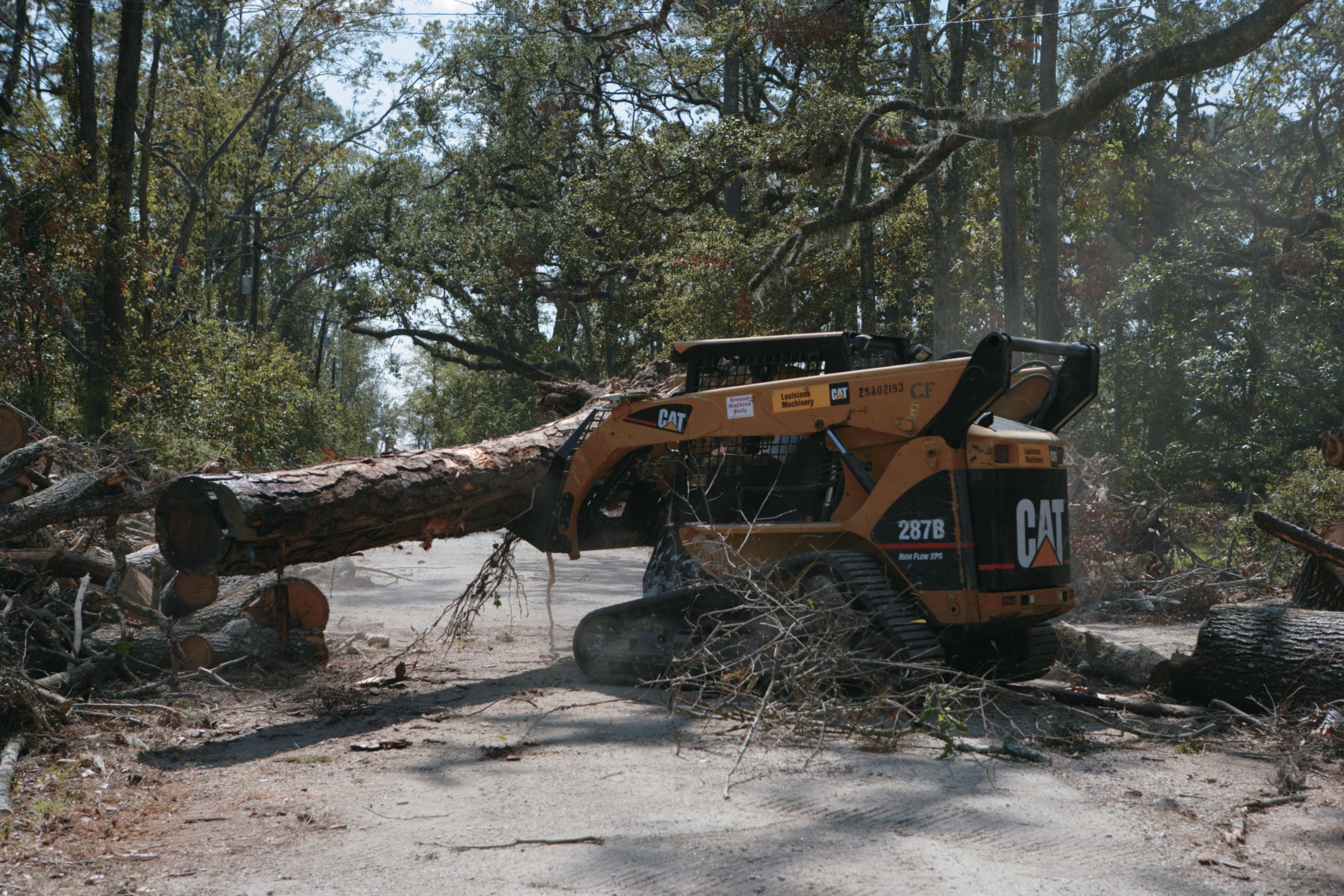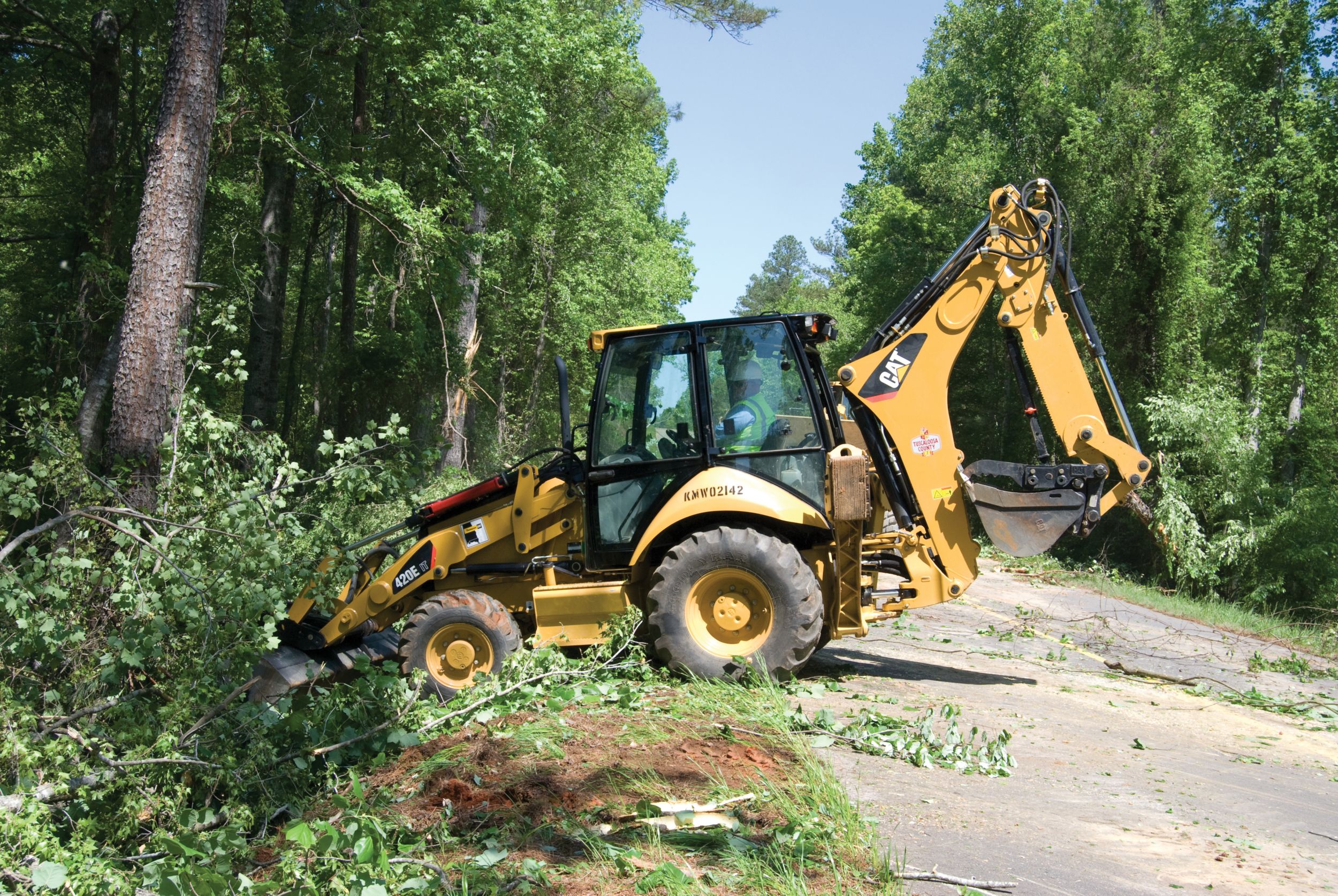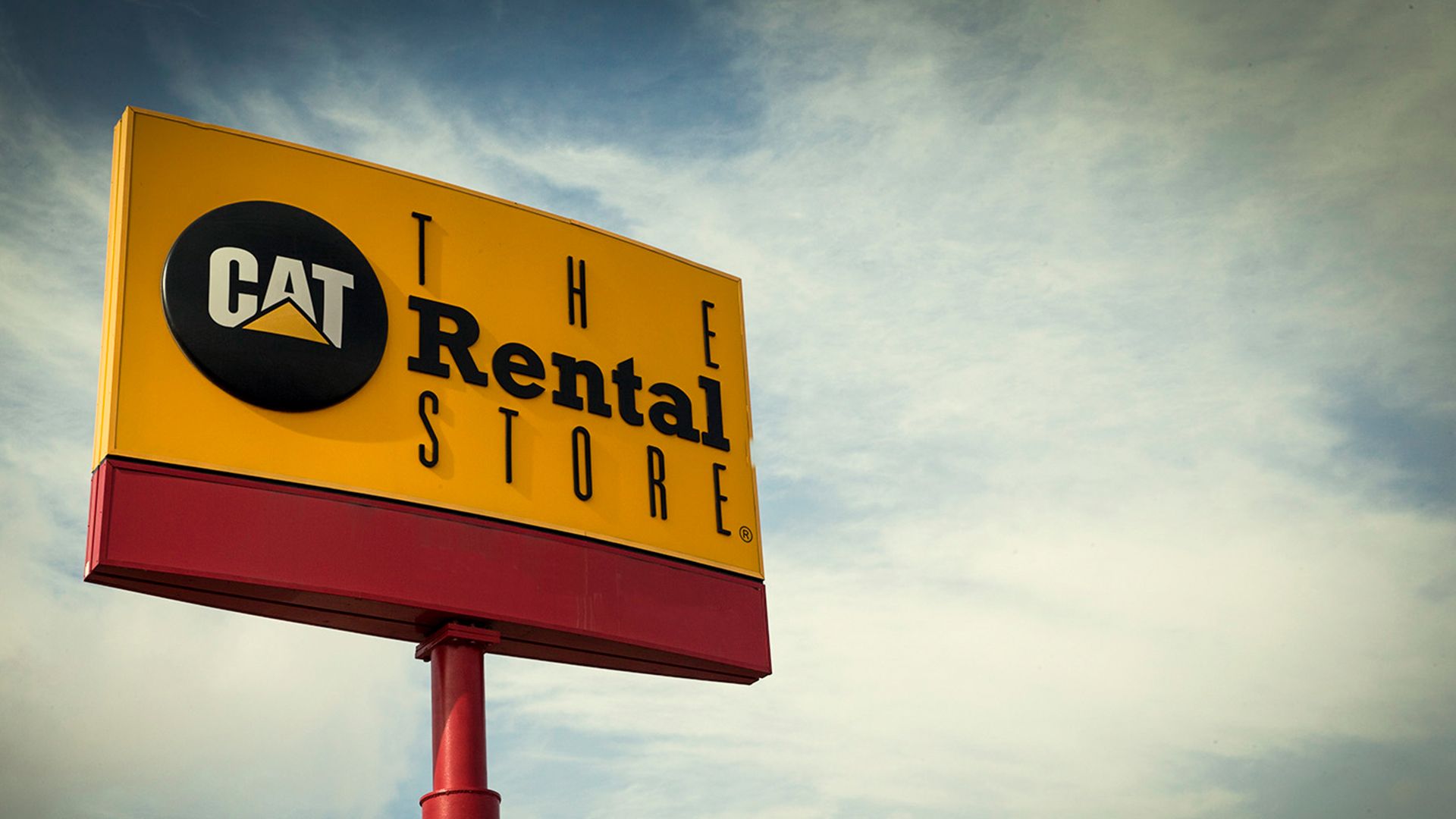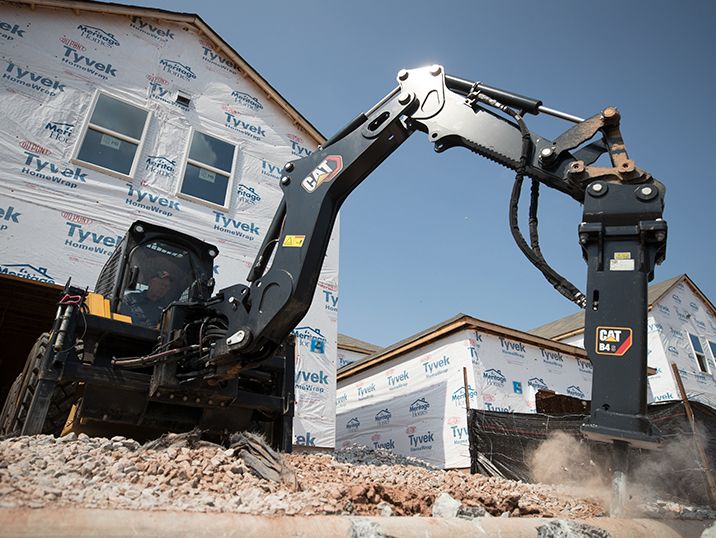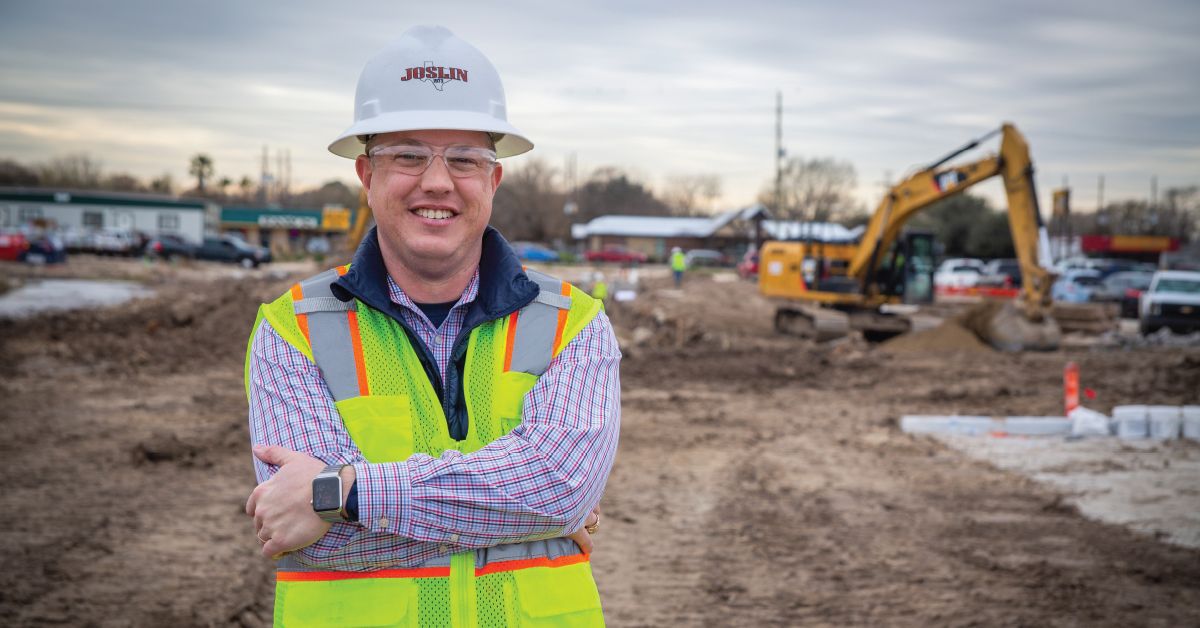If you already have an existing account with another Cat App, you can use the same account to sign in here
One Account. All of Cat.
Your Caterpillar account is the single account you use to log in to select services and applications we offer. Shop for parts and machines online, manage your fleet, go mobile, and more.
Account Information
Site Settings
Security
Preparing Your Home and Business for a Hurricane
When you live or work in a hurricane zone, there's steps you should take to get prepared before hurricane season. These steps will help you, and those around you, stay safe. And for businesses, having plans in place will allow you to continue to meet the needs of your customers and clients.
The following hurricane preparedness guide provides hurricane safety tips, a list of emergency supplies and information on the best ways to prepare your home and business inside and out.
How to Prepare Your Home and Business for Hurricane Season
When making preparations for hurricane season, assess your property for ways to minimize property damage and injury. Preparing for a hurricane involves getting your insurance in line, reinforcing your home or business' vulnerable exterior points and creating a safety plan for everyone to follow.
Below you’ll find five tips for how to prepare your property for a hurricane:
1. Determine Your Property's Hurricane Risk
The first step to preparing your home or business for a hurricane is to know the specific risks your region and property face. This way, you can take steps to prepare ahead of time and mitigate the damage and protect your safety. Know when hurricane season begins and how it progresses, as well as some of the specific weather threats and hazards that arise.
Storms carry a wide range of threats. High winds can blow shingles off roofs and cause trees or power lines to impact your property. Heavy rainfall and storm surges can cause flooding, which can invade homes and businesses and damage belongings. Throughout a storm, other risks arise, including power outages and a lack of safe drinking water. You may need to evacuate, seek shelter and get to higher ground.

2. Understand Your Insurance
If you live in a region affected by hurricanes, it’s important to understand your insurance policies and what kinds of damage and losses are covered. Having adequate insurance is the best way to protect your belongings and get the financial coverage you need to get through a difficult emergency.
Cat Financial offers insurance protection for your equipment and business for customers in the U.S. Visit their site for more information on options and coverage.
Insurance policies differ between providers in terms of what’s covered and the amount of coverage. Always be sure to have a thorough understanding of the types of claims you can make against your policy when it comes to hurricane damage.
Flood insurance is a completely separate type of insurance policy that’s administered by the federal government through authorized brokers. Oftentimes, homeowners are surprised to find out their insurance policy doesn’t cover certain types of water damage from hurricanes. If water damage happened as a result of flooding, this damage can only be covered under flood insurance. However, if water damage occurred as a result of a torn roof from high winds, this damage may be covered.
3. Inspect Your Roof
Another one of the important ways to prepare for a hurricane is to inspect your roof. Your roof is your property's most important protective barrier during a hurricane. It's important it has excellent integrity and is sufficiently insulated. If you haven’t had it inspected in a while, use the springtime ahead of hurricane season to ensure it’s in good shape. This includes replacing shingles and sub-roofing materials.
You can also install roof straps and reinforcements. These products give the roof more structural integrity so it will be less likely to suffer severe damage during a hurricane. In some areas of the U.S., such as Florida, roof reinforcements are required during hurricane season. Roof reinforcements can be added in addition to straps. These are overlapping panels of material that add sturdiness to your roof.
Hiring a professional inspector or engineer to evaluate your roof may be best. They can make sure your roof can withstand winds up to 155 mph.
4. Inspect Your Garage Door
Another potential weak point in your home during a hurricane is your garage door. High hurricane winds can force your garage door open, exposing your home and its contents to the elements. It can also cause a pressure change that can blow off a roof from inside the home. Improperly reinforced garage doors can also damage the door itself, along with the motor and the entire system, causing thousands of dollars in damage.
You can purchase and install hurricane-resistant kits, which are retrofits that are added to your garage door to reinforce it. These kits add braces across the garage door frame, bolting it into place securely. You can also take a DIY approach and install braces yourself, provided you have the right drill and socket set. Bolts should be a minimum 14-gauge weight to ensure the brace is secured well enough during a hurricane. Before choosing a DIY option, check local codes to see if specific reinforcements are required.

5. Create a Hurricane Safety Plan
Every home and business in hurricane zones should have a hurricane safety plan. Hurricane plans include the steps to take ahead of a hurricane to ensure safety and minimize property loss. A hurricane safety plan should be reviewed with all family members and employees annually ahead of hurricane season.
For businesses, review our "Tips for Preparing a Business Disaster Plan" blog for a complete guide.
For families, here's some tips for creating your own hurricane safety plans:
- Communication: Gather members of your family and assign responsibilities. Discuss with small children what to know about hurricane warnings and how to receive alerts. Make sure each person knows what your shelter and evacuation plans are and the location of your preparedness kits in the home or vehicle. Know what you’ll do if you become separated from any family member, including having a designated meeting spot.
- Preparedness: Assemble preparedness kits, including emergency bags for each member of the family containing extra clothes. It’s important that emergency kits contain only the most essential and relevant supplies for hurricane preparation. Visit Ready.gov to learn more about assembling a hurricane preparedness kit.
- Essentials: In addition to your emergency preparedness kit, you’ll need to cover some of the household essentials. These include prescription medications and eyewear, baby diapers and formula, pet supplies and carriers and any other specific needs that members of your family have, including any accessibility or mobility concerns. Be sure to have copies of essential personal documents, including driver’s licenses, birth certificates and marriage licenses, as well as a copy of your homeowners insurance policy. Store these copies digitally.
- Evacuation: If local authorities issue an evacuation warning, your family needs to have a well-rehearsed plan for evacuation. This includes where you’ll go to seek shelter or get to higher ground to avoid flooding. If your vehicle is your evacuation escape, always have additional fuel, motor oil, windshield wipers and other supplies in your vehicle to make it as safe and easy to evacuate as possible. You’ll also need to know the top evacuation routes from your home and how to avoid flood-prone areas. See our Evacuation 101 guide for more.

How to Get Hurricane Ready When a Storm Is Approaching
When a storm is approaching, here's some actions to take to be ready:
- Trim dead branches or remove trees that are at risk of damaging your home or business.
- Pull out your emergency kit and make a hurricane supply list of items you need.
- Stay updated on the current storm status.
- Move your fully fueled vehicles or heavy equipment off the street and away from power lines and trees.
Even if the impending hurricane doesn't require evacuation, it’s still important to be prepared to act if necessary.

Shop for Home Essentials
Part of getting ready for hurricanes is making sure your home is fully stocked with the essential supplies, tools and gear. Below are some of the items that should be on your disaster preparedness shopping list:
- Food and water: Gather a three- to four-day supply of shelf-stable food for your entire family. Canned meat, fruits and vegetables, granola bars, trail mix and crackers can provide a balance of macronutrients. Your water supply should cover a gallon of water per day per person.
- Tools and supplies: Have battery-powered flashlights and radios along with an ample supply of batteries. Utility knives, camping cutlery and dishes, aluminum foil and plastic storage containers are helpful to have on hand. Pliers, tape and matches or a lighter should also be on your gear list.
- Medical supplies: Gather basic first-aid supplies, including waterproof bandages, antiseptics, cold packs, scissors and tweezers.
- Sanitation: Because hurricane flooding can contaminate skin and objects, pack sanitation equipment, including hand sanitizer, disinfectant wipes, toilet paper, bleach, feminine supplies, soap or detergent and other personal hygiene products.
- Clothing and blankets: Ensure your family has enough appropriate clothing, including warm shirts, pants and socks, rain gear and boots. Be sure to also have emergency blankets or sleeping bags for the whole family.
How to Prepare Outside Your Home or Business
Home and business owners should prepare their property's exterior to reduce the risk of damage. Property damage can result in significant financial losses, and damaged businesses can result in an impact to customers and clients.
Below is a checklist of actions to take to prepare your property before a hurricane:
1. Clear Drains and Downspouts
Having excellent drainage during a hurricane is essential to mitigating flooding and water damage. Test your drains by running water and making sure the water drains quickly. If they’re slow-draining, unclog them to prevent water from backing up. Next, test your downspouts to make sure they are clear. Unclog them or make repairs to them if they aren’t functioning properly. Add downspout extenders to divert water away from your foundation if you’re concerned about flooding.
2. Clean out Gutters
Gutters should be cleaned routinely to protect your roof and prevent leaking and water damage. Ahead of a hurricane, you’ll also want to double-check that your gutters are clear. Using a ladder, access your gutters and remove as much debris as possible, including leaves, branches and dirt. After clearing gutters, be sure to check how securely they’re attached to your roof. Tighten and reinforce gutters to ensure they don’t blow away during the storm. If they’ve become too rusty, they'll need to be replaced.
3. Fill Sandbags
Be hurricane ready with sandbags. Sandbags are an effective way to prevent or minimize flood damage to your property. They’re also simple to install. Purchase burlap or woven plastic bags and fill them up to one-third full with sand. This prevents them from getting too heavy to carry. To cover a 100-foot section of property, you’ll need 600 sandbags, so adjust your requirements according to your property size.
4. Remove Loose Objects
Hurricane winds can easily turn objects into projectiles. Landscape ornaments, outdoor furniture, children’s toys and other yard items should be brought indoors. For any items that are too big or unsafe to bring inside, be sure to properly secure and anchor them. This includes grills, gas tanks, pool equipment or other bulky items.

5. Install Storm Shutters or Plywood Sheets
A significant threat to homes and businesses during a hurricane is high winds sweeping up objects that can break windows or glass doors. To prevent your windows and doors from being damaged, you can install storm shutters. Storm shutters are metal panels, usually made of aluminum, that cover your windows and doors, lessening the impact of projectiles hitting the glass.
Different storm shutter products have varying installation instructions, but most of them are easy for handy home and business owners to install themselves. The most popular variety of storm shutters is the track-system shutter, where two tracks are installed above and below the window or door. The shutters slide between these two tracks and are secured in place with wingnut bolts. While the tracks are permanently mounted, the shutters can be removed in the off-season.
An alternative to metal shutters is to board up your windows and doors using plywood. You’ll need to take measurements of all your windows and doors and cut the plywood accordingly.

How to Prepare Your Home’s Interior
After preparing your property's exterior for a hurricane, you can turn to securing your interior. Here are some steps to take to prepare the inside of your home for a storm:
1. Elevate Valuables and Furniture
If flooding occurs, you’ll want to keep your furniture or any valuables out of the way of incoming floodwaters. Floodwaters are contaminated with sewage, toxins and other waste that will damage belongings. Set up cinder blocks to elevate furniture. Or consider moving items to a higher floor or attic. It’s also a good idea to store away items like wall-mounted TVs, books or picture frames, which may break during high winds or flooding.
2. Have a Sump Pump With Battery Backup
If you have a basement or crawl space, you should likely install a sump pump. Sump pumps eliminate incoming water that pools in these areas. Sump pumps are powered by your main electrical supply, but they should also have a backup battery. Be sure to test your sump pump and its battery power ahead of a storm to ensure it’s functioning properly.
3. Turn off Water, Gas and Electricity When Needed
In the event of a flood, you’ll need to disconnect your utility supply. It’s vital to turn off your power before floodwaters enter your property to prevent the risk of electrocution. Next, you’ll also need to shut off the main water valve as well as your gas line in case your property suffers any serious damage to the plumbing or gas pipes. If you receive an evacuation order, you should turn off all utilities before you leave.
4. Prepare a Safe Room
If you live in a hurricane zone, it’s a good idea to prepare a safe room. The Federal Emergency Management Agency (FEMA) issues guidelines for how to properly build and prepare a safe room. These guidelines ensure your room will be protected from winds of up to 250 mph along with airborne debris.
If you have a safe room, you’ll want to stock it full of your supplies, tools, gear, clothing, blankets and other necessities. If you have children, you’ll also want to have some activities for them in the safe room, including books, games and toys. Have plenty of litter or training pads for your pets who won’t be able to go outside during the hurricane. Your safe room should also have a secure place to store loose items.
Call your local emergency departments to let them know you’re taking shelter inside your safe room so they can account for you if they come to check on your home.

Should You Evacuate for a Hurricane or Shelter in Place?
Whether or not you need to evacuate during a hurricane will depend on a few factors. The first factor depends on what your local authorities say about the weather warning. Pay attention to the local advisories. If an evacuation advisory comes into effect, you should evacuate immediately.
If you do evacuate, it’s important to know what local authorities advise. Find out where to go and the safest way to get there. If you live in a highly populated area, local authorities may begin evacuating people well ahead of the storm to prevent panic and congestion.
If you live in a low-lying area, you should evacuate before a storm approaches. If you have recreational vehicles or boats to tow with you, leave well ahead of the storm making landfall. It’s important to have a route and destination planned before you leave so you don’t spend more time on public roads than necessary. If you’ve prearranged accommodations with friends or family, communicate with them your whereabouts so they know when to expect you.
If your local area is not under an evacuation order, you can shelter in place instead. This is where a safe room becomes an important asset to your safety plan. Regardless of whether you need to shelter in place or evacuate, it's helpful to practice for either scenario and communicate what will need to happen.

Staying Safe After the Hurricane
When the storm has passed, it’s important to know there still remain risks to be aware of. It’s just as important to stay safe immediately after a hurricane as it is during one. If you evacuated, do not return to your home until local authorities have deemed it safe.
Once authorized to return home, be sure only adults enter first. A number of hazards and safety risks could be present in your home. The first hazard to identify is whether there are any downed power lines on your property. If there are, alert your local utility immediately. Next, check your home for standing water. If you discover standing water, make sure your power is switched off. Never turn your power off or on while wading in standing water. Only enter floodwater in full rain gear to prevent contamination.
Bring flashlights with you so your environment is well lit as you inspect your home for damage. Take note of any significant damage, such as broken windows and doors or water-damaged materials and belongings. Have hand sanitizer or soap and fresh water available to keep your hands clean as you sort through the damage.

Cleaning up Hurricane Damage
Cleaning up after a severe hurricane can be tough work. You may want to hire a company that specializes in storm cleanup. Another option is renting tools and equipment from The Cat Rental Store.
The Cat Rental Store offers the latest Cat backhoes, excavators, dozers, wheel loaders and skid steers for rent. They also have a variety of tools and attachments to make cleanup easier. If you're not sure what you need, their experts can make a recommendation based on the job or task.

Safety — Your Top Concern and Ours
For over 95 years, we've been putting safety first. Our equipment and attachments can help you prepare and protect your home and business from the threat of disasters. See more of our resources and tips for staying safe during disasters.
Prepare for Disasters
Resources and Support
Related Articles
-
Rebuilding for Resilience
With the increasing occurrence of natural disasters around the world, rebuilding for resilience is an essential conversation within the construction community. It's time to reform our disaster response plans, and it begins with how we approach construction at its core.
Learn More -
Cat Financial Program Supports Customers During Disasters
Cat Financial’s Customer Care Program offers assistance to eligible customers whether they're impacted by disasters or crises.
Find out how -
The Generator Power Helped the Business Get Running Again
TIMELY SUPPORT: ‘We had no way to process credit cards, and people didn’t have access to cash.”
Learn More -
Cat® Rental Power Deployment Saves Millions Worth of Product
When Hurricane Michael battered the coastal region that includes Port St. Joe, Florida in October, not only did it knock out power, but sustained winds that reached 155 mph wreaked havoc with onsite backup generator sets. A Cat® Rental Power deployment saves millions of dollars worth of product.
Learn More












